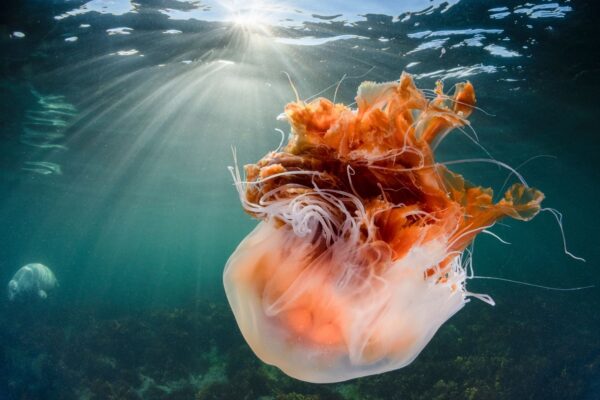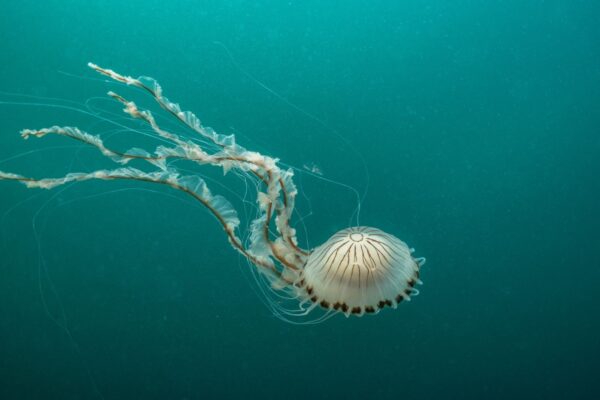The Marine Conservation Society has released its first Wildlife Sightings report, publishing last year’s findings from its long-running citizen science project.
The project asks the public to report jellyfish and marine turtle sightings in and around the UK and Ireland’s shores. The charity collects and analyses reports of these species to identify trends in their distribution around the UK. Changes in when and where marine wildlife are spotted can help understand how the ocean is changing in response to environmental factors, like climate change. (Photo: Lions Mane jellyfish, Kirsty Andrews/MCS)
Between 1st October 2021 and 30th September 2022, there were a total of 1,315 jellyfish sightings reported to the Marine Conservation Society. The charity regularly records sightings of eight jellyfish species which are found around the UK and Ireland. More uncommon visitors were also spotted, with 11 species in total reported in the past year.
Compass and moon jellyfish the most sighted species
The compass jellyfish (pictured above; photo: Peter Bardsley/MCS) was the most reported species, making up almost a quarter (23%) of total sightings. This was followed closely by moon jellyfish (also 23%), which were often seen in smacks (groups of jellyfish) of over 100.
Portuguese Man O’ War sightings on the up
Storms in October 2021 and February 2022 led to an increase in Portuguese Man O’ War sightings, which were up by 2% from the previous year. Although they have a bad reputation, these jellyfish-like creatures don’t normally occur in UK waters, preferring instead to drift in the open ocean. Sightings of these unusual visitors were primarily along the Southwest coast and the west coast of Scotland, with westerly winds carrying them across the Atlantic to our shores. Sometimes stranding at the same time was the violet sea snail, which floats on the surface in bubble rafts, feeding on Portuguese Man O’ Wars.
The charity saw an increase in ‘other’ species reported, up from 5% to 9% this year. Among these were the bioluminescent crystal jellyfish which made up 3% of total sightings and sea gooseberries at 1% – the highest percentages reported to date. Crystal jellyfish are usually found in the Pacific Ocean, rarely spotted in UK waters, suggesting that warmer temperatures may be impacting jellyfish diversity in the UK.
Wildlife Sightings Report
The charity’s Wildlife Sightings report includes a map of all reported jellyfish and turtle sightings, a breakdown of each jellyfish species reported, a map of Portuguese Man O’ War sightings, and the number of sightings reported each month.
The Marine Conservation Society continues to run its wildlife sightings project to see what happens to the distribution and frequency of mass jellyfish blooms over time and will be celebrating its 20th year of the national jellyfish survey in 2023.
The charity is encouraging the public to continue to report any species they see, with some visiting our shores in winter months. The data will help to explore any links jellyfish blooms have with big-picture factors such as climate change. Long-term datasets, like this one, can also help predict where jellyfish blooms may occur to ease the problems large blooms cause the marine industries.
Further information and the Wildlife Sightings Report can be read here.

